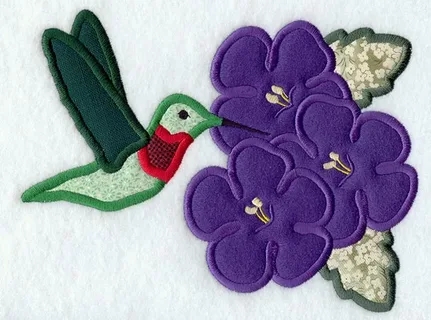Tips To Embroider Applique Embroidery Designs By Digitizing
Here are the professional Tips To Embroider Applique Embroidery Designs By Digitizing. So what are you waiting for?

Applied embellishment is a common method in which one piece of fabric is sewn onto another to create particular designs or motifs. This method brings contrast, tones, and depth to core embroidery undertakings. Embroidery digitizing plays a crucial role in this process, ensuring precision and accuracy. The following points are very useful for people who are new to the embroidery world as well as for those who want to improve their skills in applying applique embroidery designs.
Understanding Applique Embroidery
Applique embroidery uses both the clothing fabric and embroidery digitizing to create astonishing work. The applique fabric is then cut to the desired pattern and sewn onto the flat base fabric using stitch types ranging from satin to zigzag or blanket stitches.
Choose the Right Materials
To achieve quality applique embroidery, the proper materials must be used. Select materials for the outfits that are similar in terms of weight and density. Complex designs require lightweight fabrics, while heavier fabrics work better with simple shapes. For embroidery, high-quality embroidery thread is recommended to ensure a long-lasting product with perfect color.
Prepare Your Fabrics
Before you start, pre-wash your fabrics to prevent shrinkage and remove chemicals or dirt. Iron the fabrics to eliminate small creases, making it easier to work with and stitch them.
Digitize Your Design Carefully
When scanning your applique design, focusing on position lines, containment lines, and attachment lines is essential. The placement line indicates where to put the applique fabric, the tack-down line holds it firmly in place, and the cover stitch shapes the edges of the applique. The following elements should be incorporated into the digitized design to give it a professional look.
Use Stabilizers
Stabilizers prevent puckering and distortion, ensuring the fabric remains smooth for stitching. For light fabrics, use a tear-away stabilizer, while heavier fabrics require a cut-away stabilizer. Before beginning your embroidery, apply the stabilizer to the back of the base fabric.
Cut Applique Fabric Accurately
Neatly hemmed edges require precise cutting of the applique fabric. Use sharp fabric scissors or a rotary cutter for clean cuts. Some embroiderers prefer ready-made applique shapes for accuracy and time efficiency.
Secure Applique Fabric Properly
After placing the applique fabric onto the base fabric, secure it using temporary spray adhesive or pins. Ensure it is flat and free of creases before sewing. Use the tack-down stitch before applying the cover stitch.
Adjust Machine Settings
Settings vary depending on the type of fabrics and threads used. Adjust stitch length, tension, and speed accordingly. Running a test on a fabric swatch helps fine-tune the settings before starting the actual project.
Trim Excess Fabric Neatly
Trim excess applique fabric along the tack-down stitch line without cutting the base fabric. Use small, sharp scissors for a clean edge, which is crucial for a polished finish.
Choose the Right Stitch
The stitch type used for hemming the applique fabric edges determines the final look. Satin stitches create a sleek, refined appearance, while blanket stitches offer a more handmade feel. Choose a stitch type that complements your design and fabric.
Practice Patience and Precision
Taking ample time for each step in the applique process minimizes errors. Maintaining a steady stitching rhythm and exercising great care during cutting, trimming, and stitching will result in a high-quality final product.
Experiment with Different Designs
Exploring various designs and practicing different techniques will enhance applique embroidery skills. Start with basic designs before advancing to complex shapes. Experimenting with different stitch options helps develop a unique embroidery style.
Conclusion
Applique embroidery is a highly useful and fascinating art form that enhances fabric designs in many ways. By mastering the fundamental principles, selecting the right materials, and paying attention to details, you can create beautiful applique pieces. Keep these tips in mind and take your time to perfect your work. Happy embroidering!
What's Your Reaction?
















.jpg)
